Key takeaways:
- Cross-pollination of ideas fosters creativity and innovation by challenging assumptions and encouraging exploration beyond habitual thinking.
- Designing engaging workshop formats, such as hands-on activities and varied interactions, enhances participant involvement and idea-sharing.
- Creating an inclusive atmosphere, through techniques like circular seating and icebreakers, encourages open dialogue and participation among attendees.
- Measuring workshop success through qualitative feedback and follow-up communication helps assess long-term impact and reinforces learning for participants.
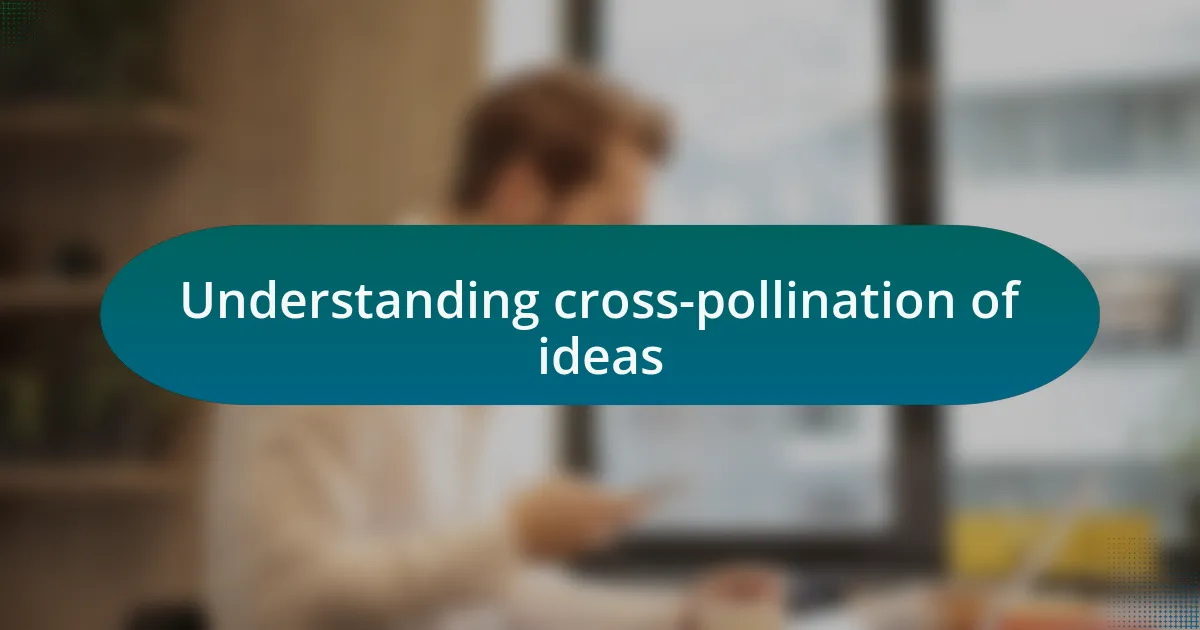
Understanding cross-pollination of ideas
Cross-pollination of ideas occurs when diverse perspectives come together to stimulate creativity and innovation. I remember attending a tech workshop where participants from various fields discussed their projects. It was fascinating to see how an architect’s approach to problem-solving inspired a software engineer to rethink their app’s interface.
When people from different backgrounds interact, they challenge each other’s assumptions and ignite new ways of thinking. Have you ever noticed how a simple suggestion can lead to a breakthrough that you never saw coming? That’s the beauty of cross-pollination; it opens up a dialogue that encourages exploration beyond our habitual thinking patterns.
In my experience, the most fruitful collaborations arise from these unexpected conversations. I’ve learned that sharing even the most unconventional ideas can lead to surprising synergies. This process not only deepens our understanding but also fosters a sense of community, making everyone feel valued in the exchange of ideas.
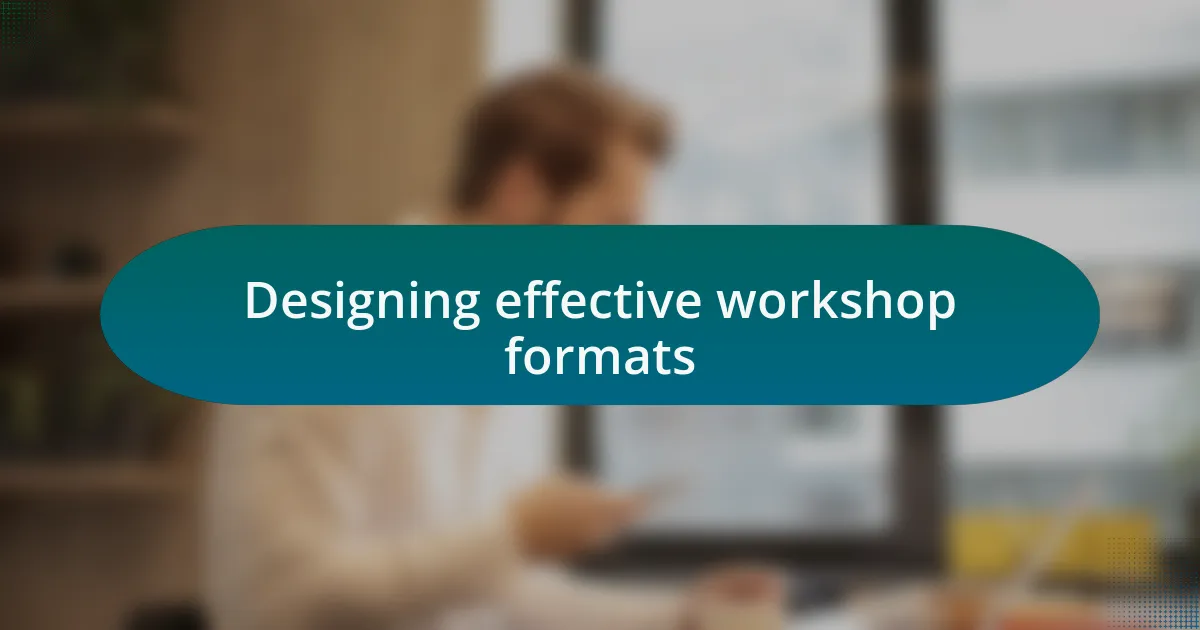
Designing effective workshop formats
Designing effective workshop formats means tailoring experiences to keep participants engaged and encourage idea-sharing. When I led a workshop focused on artificial intelligence, I initiated breakout sessions where attendees exchanged insights in small groups. I noticed how the intimacy of these discussions allowed quieter participants to voice their thoughts, unleashing a wealth of creative solutions.
Another approach that has proven successful is incorporating hands-on activities. For example, when we designed a coding workshop, we included live coding challenges. The energy in the room was palpable; participants not only learned from the instructor but also from each other’s strategies and problem-solving techniques. Isn’t it amazing how learning collaboratively can spark deeper understanding?
Ultimately, varying the formats keeps the energy flowing. I often switch between interactive presentations, group brainstorms, and feedback sessions to maintain momentum. Reflecting on past workshops, I realized that a dynamic environment nurtures curiosity and invites risk-taking. How do you keep your workshops fresh and engaging? Engaging formats transform passive listeners into active contributors, paving the way for innovative ideas to flourish.
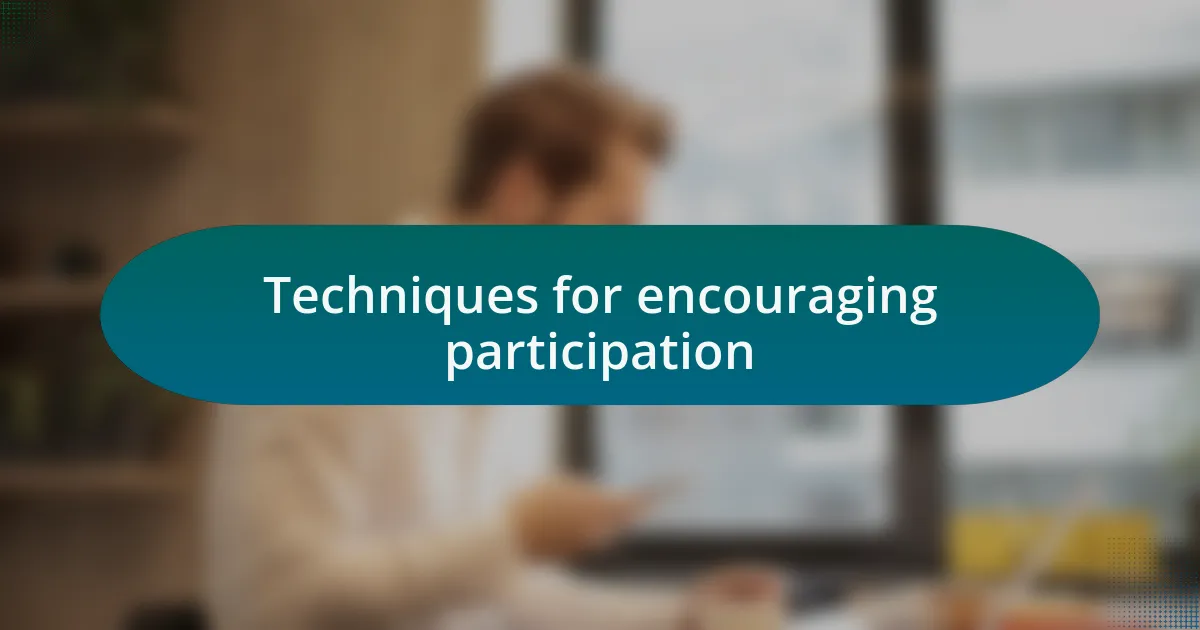
Techniques for encouraging participation
Creating an inclusive atmosphere is essential for encouraging participation in workshops. I remember one particular session where I intentionally arranged the seating in a circle instead of rows. This simple shift eliminated barriers and encouraged eye contact, transforming the workshop into a lively conversation. It’s fascinating how physical space can influence dialogue and inspire participants to share their ideas more freely.
Another technique I’ve found incredibly effective is using icebreaker activities. In a recent workshop on digital marketing, I introduced a quick game where everyone shared their favorite tech gadget. Not only did this lighten the mood, but it also revealed common interests among the participants, paving the way for deeper discussions later on. Isn’t it interesting how a few fun moments can build a sense of community and belonging?
Moreover, I believe that providing multiple channels for feedback during workshops fosters a more inclusive environment. For instance, when I employed anonymous digital polling for participants to share their thoughts in real-time, I noticed an increase in contributions, especially from those who might typically hold back. This approach empowered everyone to voice their opinions without fear of judgment. What techniques have you tried that made a noticeable difference in participation?
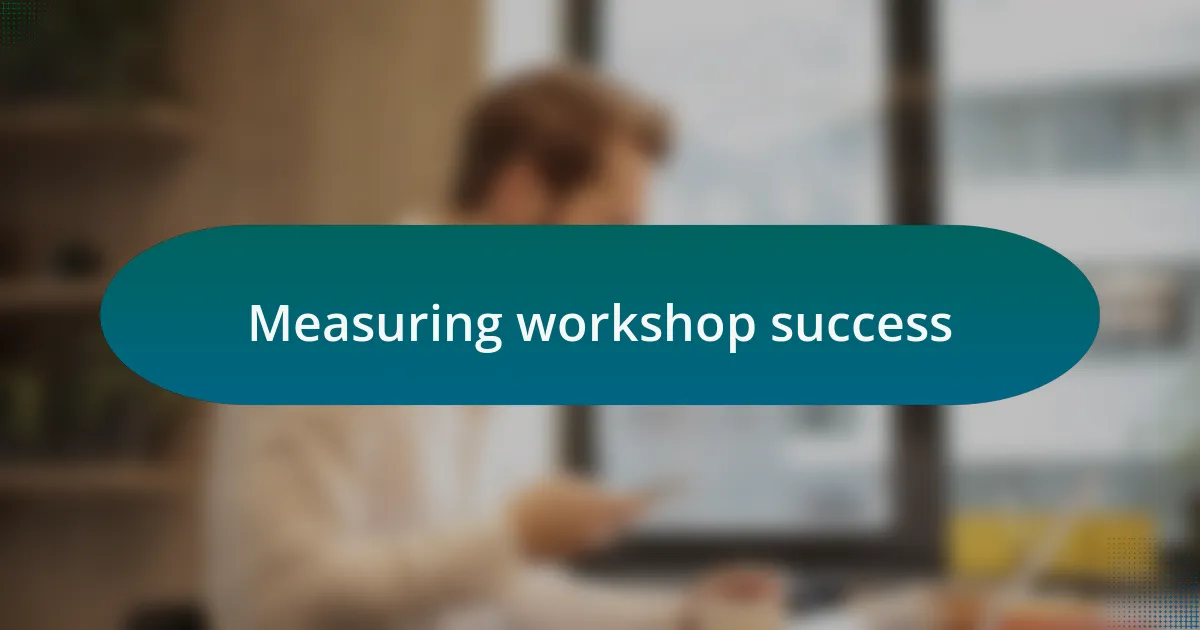
Measuring workshop success
Measuring the success of a workshop often requires a combination of qualitative and quantitative metrics. I remember after a particularly engaging session on artificial intelligence, I distributed a short survey designed to gauge both participants’ satisfaction and the applicability of what they learned. The feedback revealed that 80% felt more confident applying AI concepts in their work, which was incredibly validating for me as a facilitator. Have you ever experienced that moment of relief when you know your efforts are making a difference?
Participation metrics can offer revealing insights, too. In one workshop, I tracked engagement levels by counting how many hands were raised during discussions. The initial count of seven hands suggested a potential disengagement, but by incorporating more interactive elements, such as small group discussions, I was thrilled to see that number soar to over twenty by the end. Isn’t it rewarding to see the tangible effects of your facilitation techniques in real time?
Finally, I believe follow-up communication is key to understanding a workshop’s long-term impact. After a recent session on emerging tech, I reached out to participants via email to ask how they were implementing their new knowledge weeks later. I received replies with stories of success and innovation that inspired me just as much as the workshop itself. When you follow up, it not only reinforces learning but also nurtures a lasting relationship with participants. How do you maintain connections post-workshop to see the real fruits of your labor?
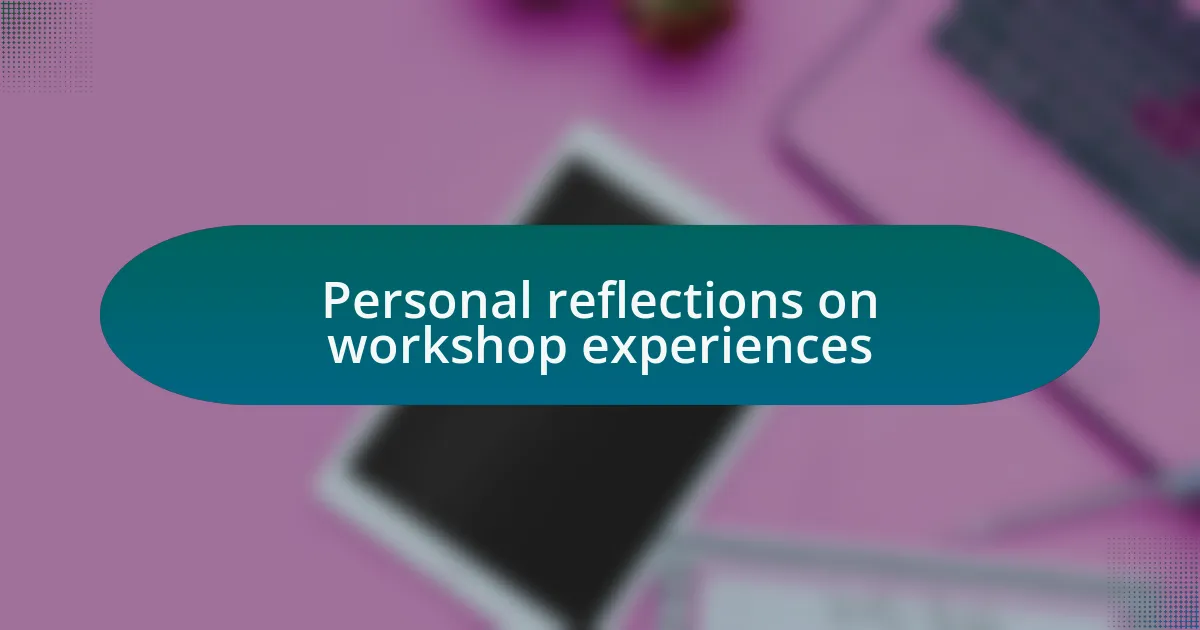
Personal reflections on workshop experiences
Reflecting on my workshop experiences, I often find that the most memorable moments come from unexpected conversations. During one session on cloud computing, a participant shared an innovative use case from their startup that completely shifted the direction of our discussion. It’s fascinating how a single idea can reverberate through a room, inspiring others to rethink their approaches. Have you ever witnessed a lightbulb moment that transformed a mundane topic into an exciting dialogue?
I also cherish the moments when participants bravely share their struggles. In a recent workshop on user experience design, one attendee expressed frustration with a project that had stalled. The collective brainstorming that followed not only offered her new solutions but also fostered a sense of community among everyone present. There’s something powerful about vulnerability in a group setting. How often do we create safe spaces where honest sharing can lead to collaborative breakthroughs?
One thing that stands out to me is the energy that comes from exchanging diverse perspectives. At a workshop on entrepreneurship, I was struck by how participants from vastly different industries found common ground in their challenges. We kicked off the session with an icebreaker that encouraged sharing personal stories, which set a tone of openness. By the end, I realized that the connections formed in that room were just as valuable as the content delivered. Isn’t it thrilling to see how collective experiences can elevate a workshop beyond simple education?